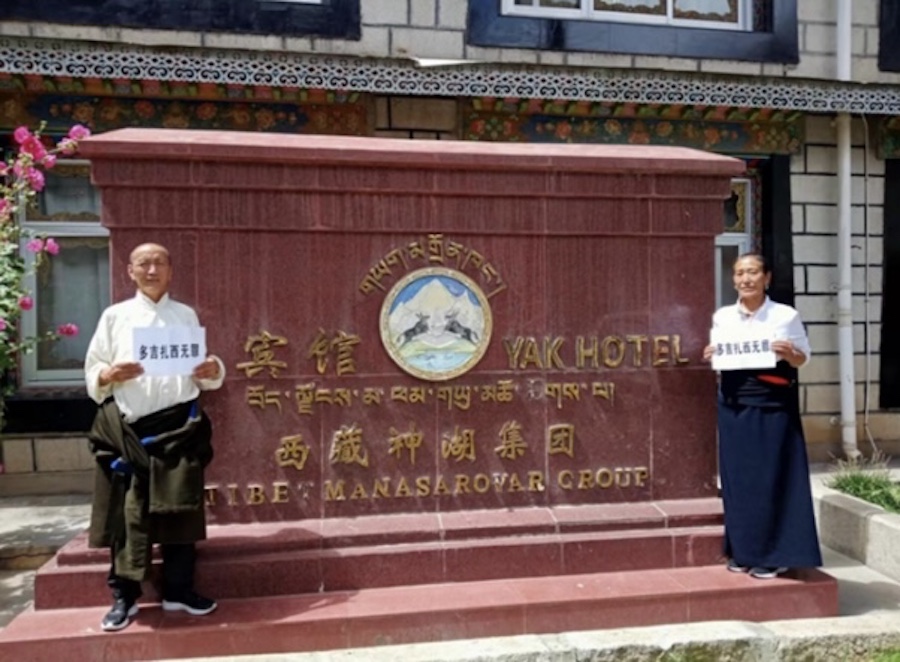By Sugita Katyal
MCLEODGANJ, India – Jampa Norgay is 10 years old, an age at which he should be in school.
 But the curly-haired boy has just spent a month trekking through treacherous snowy mountains and thick forests to escape from Tibet. He is now in a refugee centre in northern India wondering where he goes next.
But the curly-haired boy has just spent a month trekking through treacherous snowy mountains and thick forests to escape from Tibet. He is now in a refugee centre in northern India wondering where he goes next.
“My mother cried a lot when I left,” said Norgay softly, tears welling in his eyes, as he sat on a grubby mattress in a small room surrounded by many tired Tibetan refugees just arrived after a long gruelling journey through the Himalayas.
“I miss my mother a lot.”
Norgay joins about 80,000 Tibetans refugees living in India since their spiritual leader, the Dalai Lama, sneaked out of Lhasa in disguise 45 years ago after a failed uprising against Chinese rule.
Many live in the northern hill town of McLeodganj, a bustling little settlement where wizened monks with prayer wheels in their hands jostle for space with European and American backpackers clutching Lonely Planet guides.
Activists say some 2,500 refugees have been pouring into India from Tibet every year. From McLeodganj, they are sent to Tibetan schools, monasteries and settlements all over the country.
“Since most of them escape in winter, many of them suffer from frostbite when we receive them first in Kathmandu,” said Mingyur Youdon, who manages the McLeodganj centre.
“They’re also mentally devastated.”
NOWHERE PEOPLE
The refugees say they were forced to leave because of Chinese disregard of fundamental human rights, religious intolerance and cultural discrimination.
The walls of McLeodganj — called “Little Lhasa” — are plastered with posters that say “China: Get Out of Tibet” or “China’s record in Tibet: More than a million killed, More than 6,000 monasteries destroyed, Thousands in prison, Hundreds missing.”
“We’re forced to flee because we have no Tibetan education in schools there, we’re not allowed to follow our religion,” said an angry shopkeeper, standing behind a pile of T-shirts with “Free Tibet” emblazoned on them.
“Our lives are tragic. It’s the same story for thousands.”
But living in exile isn’t easy either.
Many Tibetans in McLeodganj, where Hollywood stars Richard Gere and Goldie Hawn are regular visitors, say they are running out of patience living as nowhere people in a nowhere land.
They have few jobs and can only make a living working for the government-in-exile or running handicraft shops and hotels.
“How long can we live like this?” asked Shereb, a second-generation refugee whose father fled Tibet decades ago but who has never been there himself.
“We want the problem resolved so we can return to Tibet or move to the U.S. where we’re treated with more sympathy and also have more job opportunities.”
SEEKING INDEPENDENCE
Many are also critical of the Dalai Lama’s “Middle Way” approach seeking greater autonomy for Tibet instead of complete independence, and they call it a climbdown from the original aim of their movement.
Although a 46-member Tibetan parliament in exile this month endorsed the god-king’s plans to seek a dialogue with China, many activists say they won’t settle for anything but independence.
“We want to fight for complete independence,” said Acharya Yeshi Phuntsok, the president of the National Democratic party of Tibet, the only Tibetan political party, though it has still to be recognised by the Tibetan government in exile.
“The Dalai Lama has changed his strategy because of circumstances.”
The Dalai Lama says he is willing to negotiate with China but the Chinese still remain deeply suspicious.
“My side is always welcome…I am always ready to meet them. What’s their suspicion? Let me know,” the Nobel Peace laureate told reporters at his heavily guarded home in McLeodganj, a near spiritual supermarket where you can learn everything from Tibetan cooking to yoga and meditation.
“There should not be any disagreement. But the Chinese accuse me of seeking independence. There’s too much suspicion in them. The best way to eliminate suspicion is to meet face to face.”









